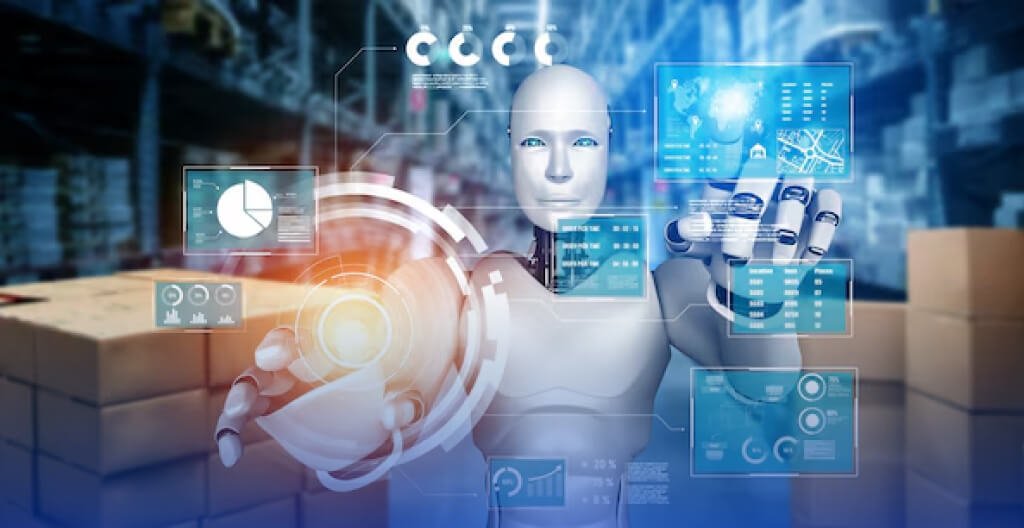Traditional cloud-first architectures, where all compute, storage, and AI workloads run entirely in the public cloud, are now hitting limits. As a result, enterprises are increasingly evaluating Hybrid AI Systems vs Traditional Cloud models to determine what delivers better performance.
Growing concerns around data privacy, latency, regulation, and costs are pushing organizations toward Hybrid AI Systems. These systems combine on-prem, edge computing, and the public cloud to achieve balance and efficiency. Moreover, industry analysts and hyperscale’s confirm this shift. For example, Gartner highlights hybrid computing and AI infrastructure as major enterprise trends.
In simple terms, Hybrid AI runs each stage of the AI lifecycle where it performs best, not just in the cloud. Furthermore, IBM provides a clear comparison of Hybrid AI Systems vs Traditional Cloud approaches for deeper understanding.
For example , Gartner highlights hybrid computing and AI infrastructure as major enterprise trends
What Is Hybrid AI?
Hybrid AI is an architectural strategy where AI workloads are distributed across multiple environments:
- Edge devices (for ultra-low latency inference)
- On-prem data centers (for secure, regulated data)
- Public cloud (for large-scale training and elasticity)
In simple terms, Hybrid AI runs each stage of the AI lifecycle where it performs best — not just in the cloud.
Additionally, IBM provides a clear comparison of Hybrid AI Systems vs Traditional Cloud approaches for deeper understanding.
Why Hybrid AI Systems vs Traditional Cloud Is Becoming the New Enterprise Standard?
1. Latency-Sensitive Applications Need Local Inference
Mission-critical workloads like:
- Autonomous robotics
- Industrial automation
- Real-time fraud detection
- Smart mobility systems
cannot tolerate cloud round-trip delays. Consequently, Hybrid AI keeps inference near the data source, ensuring milliseconds-level response time.
Learn more about how edge computing enables ultra-low-latency AI
2. Data Privacy, Residency & Compliance
Industries such as healthcare, banking, and government must keep sensitive data within regulated boundaries. In comparison to cloud-only models, Hybrid AI allows organizations to keep pre-processing or inference on-prem while training or analytics occur in the cloud. In addition, the Financial Times outlines how AI infrastructure must evolve to meet rising privacy and regulatory pressures.
3. Cost Optimization & Reduced Cloud Dependency
Running all AI workloads in the cloud is expensive.
Hybrid AI Systems cut costs by allowing businesses to:
- Perform inference locally
- Reduce cloud egress
- Use the cloud only for large parallel training
- Scale workloads intelligently
Red Hat’s cloud meets AI trend breakdown highlights this cost shift.
Many organizations are becoming cautious of being locked into a single cloud provider. With hybrid solutions (like Azure Arc), businesses can run AI workloads across multiple environments while maintaining unified control. Meanwhile like Azure Arc) help companies run AI workloads across multiple environments with unified control.
Core Hybrid AI Architecture Patterns
Hybrid AI systems are not the future; they are the present. Enterprises are actively moving beyond traditional cloud-first strategies to meet latency, cost, and regulatory needs. With the right architecture and tools, hybrid AI delivers performance, flexibility, and resilience that purely cloud-based systems simply cannot.
Edge Inference + Cloud Training
- Small/distilled models run at the edge
- Large models trained in the cloud
- Periodic model syncs
On-Prem Secure Processing + Cloud Analytics
- Sensitive data processed locally
- Only anonymized/aggregated data moves to the cloud
Federated/Split Learning
- Models trained across decentralized datasets
- No raw data transfer, ideal for healthcare & finance
Cloud Control Plane + Local Data Plane
- Cloud provides orchestration
- Storage and inference remain on-prem
Benefits of Hybrid AI
- Low-latency inference (critical for automation, robotics, retail tech)
- Enhanced data governance & compliance
- Optimized cloud spending
- Resilience & redundancy
- Hardware flexibility and reduced lock-in
As a result, businesses can achieve more stable performance across varied environments.
Challenges (and How to Solve Theme)
Challenge: Operational complexity
Solution: Use hybrid orchestration platforms like Azure Arc, Anthos, and OpenShift.
Challenge: Model versioning across edge nodes
Solution: Centralized model registry (Kubeflow, MLflow).
Challenge: Security across distributed environments
Solution: Zero-trust, unified IAM, encrypted comms.
Enterprise Implementation Checklist
- Classify workloads → latency, sensitivity, compute requirements
- Define data governance rules → what stays on-prem vs cloud
- Choose hybrid orchestrator → Arc, Anthos, OpenShift
- Prepare pipeline → CI/CD for ML models
- Optimize models for edge → quantization, pruning
- Pilot → start with one business unit
- Scale → expand once performance + compliance validated
Real-World Use Cases
Manufacturing
Edge-based anomaly detection
Cloud training for new fault patterns
Healthcare
On-prem medical imaging inference
Federated learning across hospitals
Finance
Low-latency fraud detection at ATMs/POS
Batch training in the cloud for global model updates
Retail
In-store personalization
Cloud analytics for customer behaviour insights
Conclusion
The debate of Hybrid AI Systems vs Traditional Cloud is no longer theoretical. Enterprises are already moving beyond cloud-first strategies due to their need for lower latency, better cost control, and stronger regulatory compliance. Ultimately, with the right architecture and orchestration tools, hybrid AI offers performance, flexibility, and resilience that fully cloud-based systems cannot match.
Frequently Asked Questions
Hybrid AI distributes workloads across edge, on-prem, and cloud environments, allowing lower latency, stronger data privacy, reduced cloud costs, and more flexible infrastructure, capabilities that cloud-only systems cannot deliver.
Yes. Hybrid AI enables sensitive data to stay on-prem or at the edge while only sending anonymized or non-critical data to the cloud. This helps meet strict compliance requirements in industries like healthcare, banking, and government.
Initially, yes. But using orchestration tools such as Azure Arc, Google Anthos, and Red Hat OpenShift makes deployment, monitoring, model updates, and scaling much simpler across distributed environments.
Latency-sensitive and data-restricted use cases benefit most—such as industrial automation, autonomous systems, fraud detection, smart retail, medical imaging, and federated healthcare systems.
MAIL US AT
sales@hutechsolutions.com
CONTACT NUMBER
+91 90351 80487
CHAT VIA WHATSAPP
+91 90351 80487
Humantech Solutions India Pvt. Ltd 163, 1st Floor, 9th Main Rd, Sector 6, HSR Layout, Bengaluru, Karnataka 560102



